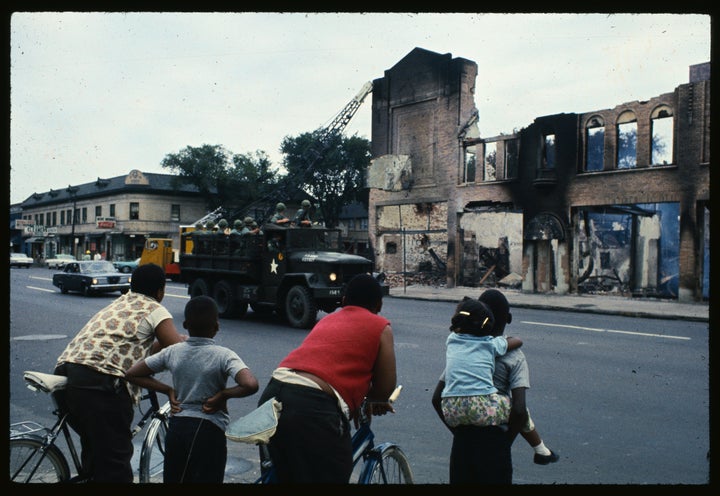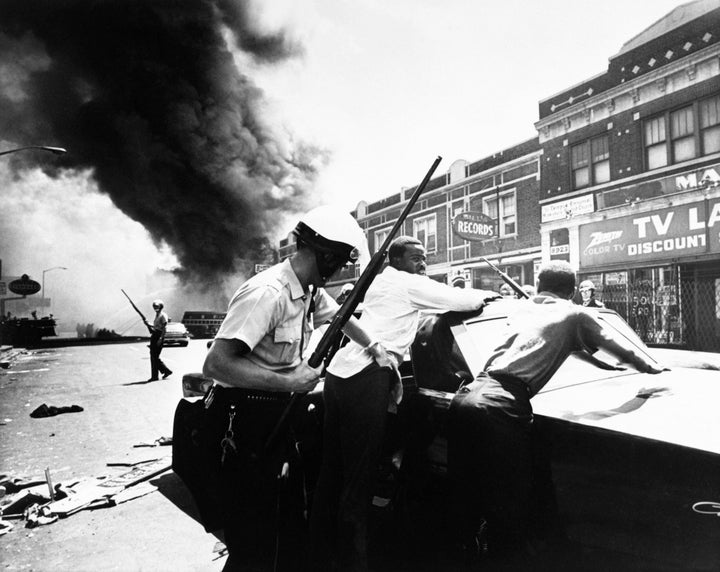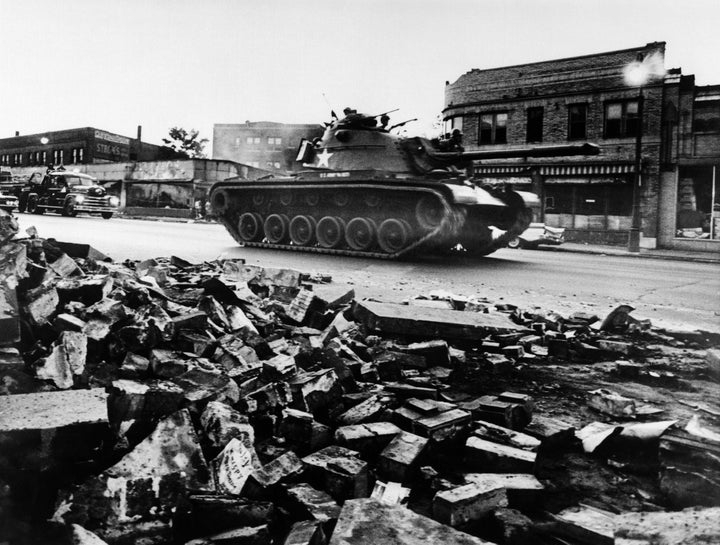
DETROIT ― Two miles down the road from the intersection where the city’s most infamous riot began, leaving 43 people ― most black ― dead in July 1967, Quan Neloms teaches ninth-grade boys a whirlwind overview of U.S. history, from the 1860s to the present.
It’s a lot of ground to cover.
“In a good year, we usually get to the civil rights movement,” Neloms said with a chuckle.
But the social studies teacher at the Frederick Douglass Academy for Young Men, a public school, likes to cover the 1967 uprising as part of a series of three, joined by Detroit’s 1863 and 1943 “race riots.” (Disputes over what to call the ’67 disturbance are also part of the lesson.)
“It gives the students a chance to see ... how have race relations improved or not improved since those time periods,” he said. “You can kind of see the whole problems with race never really got handled.”
The city’s ongoing racial divisions loom large this year as the 50th anniversary of the riot approaches and are driving a major effort to educate the community about that chapter of the city’s past “so we can go 50 years and not still be in the same place,” said Tobi Voigt, senior director of education and outreach at the Detroit Historical Society.
The 1967 uprising was most immediately sparked by a police raid on an illegal after-hours club and the arrests of dozens of patrons on July 23. In five days, 43 people were killed, more than 1,100 were injured and over 7,000 were arrested. About 2,500 stores were damaged by looting and arson, and hundreds of families were displaced. Thousands of state and city police officers and National Guard and Army troops were dispatched to respond.

The Detroit disturbance was the most violent of dozens that broke out in cities across the U.S. that year, fueled by simmering discontent over police brutality and pervasive racism, and it defined the city for decades to come.
One of the historical society’s projects is gathering firsthand accounts from community members who lived through the riots. Its online collection holds several hundred stories. Voigt is creating curriculums around the 1967 unrest with a group of teachers in the county, including lessons in which students learn how to conduct interviews and collect oral histories of the riots from family members and neighbors.
Voigt is also working to bring people who were teenagers in 1967 into classrooms to help students connect what’s happening in their own lives to what young people experienced 50 years ago.
Neloms takes another approach: Outside of class, he runs an extracurricular program at Frederick Douglass in which kids are writing poetry and music about 1967.
“There’s very good research that indicates that the most powerful way of changing people’s attitudes about race is to expose them to the actual historical experience of African-Americans,” said John Rury, an education professor at the University of Kansas. “If [teachers] can present this history in all of its troubling detail, we think that that’s going to have a potentially very powerful effect.”
Voigt’s lesson plans could benefit teachers who don’t have extensive access to educational materials about the riots. Black urban disturbances of the mid-1960s ― in Detroit, Los Angeles, Atlanta, Boston, Cincinnati, Newark, New Jersey, and other cities ― often get short shrift in textbooks, said Shawn Alexander, an associate professor at the University of Kansas and director of its Langston Hughes Center.
Alexander and Rury are leading a National Endowment for the Humanities-funded institute in June for teachers to learn about the so-called “long hot summer of 1967” and bring a better understanding back to their classrooms.
If textbooks do cover the race-related uprisings in the 1960s, it’s contrasted with the victories of the civil rights movement, Alexander said.
“They’re discussed in a way that they’re a negative thing and seen as blacks destroying their own communities, the same way we’ve had the rhetoric around Ferguson and Baltimore,” he said.
Alexander said a full account of the civil disturbances includes exploring the police violence and structural racism in housing, employment and education that precipitated them.
In the Detroit area, teaching the full history and impact of the riots is crucial. The city still struggles with a legacy of segregation, high unemployment, housing issues and poverty, but it’s also going through enormous changes as investments ― and white people ― are returning to the greater downtown area and as long-term residents in some neighborhoods worry they’re being left out of the city’s resurgence.
Many of Neloms’ students have at least one family member who lived in Detroit during the riot, and they can still see its effects on blighted blocks riddled with abandoned buildings. The teacher said Detroit area students should learn about the 1967 riots as part of their history and to address the misconceptions, particularly in suburban communities, that unfocused black rioting and property destruction fueled white flight and the city’s ills.
One of the foundational lessons for educators and students is over what to call the 1967 events. The terminology people use ― “riot,” “rebellion” or something in between ― reflects different attitudes toward black and white unrest, said Clarence Lang, a KU professor leading the June institute.
“‘Riot’ can typically mean something that is kind of incoherent rage and not necessarily something that might be understood as a political phenomenon, that people are actually responding to concrete economic and social circumstances,” Lang said.
“Some students look at it still and say, ‘No, that was a riot. They tore up their own neighborhood,’ and other students may say it was more like a rebellion,” Neloms said. “I don’t stifle that.”

Students in Neloms’ class quickly relate historical events to their lives.
High school kids today have grown up hearing about shootings of unarmed young black men, such as Trayvon Martin’s death in Florida at the hands of a neighborhood vigilante in 2012, as well as community responses including the Black Lives Matter movement, Alexander noted.
“They’re trying to understand what’s going on in the country,” Alexander said. “If we can give them historical information to try to make connections, and we can give their teachers the tools to make those connections, I think we can make a difference.”

